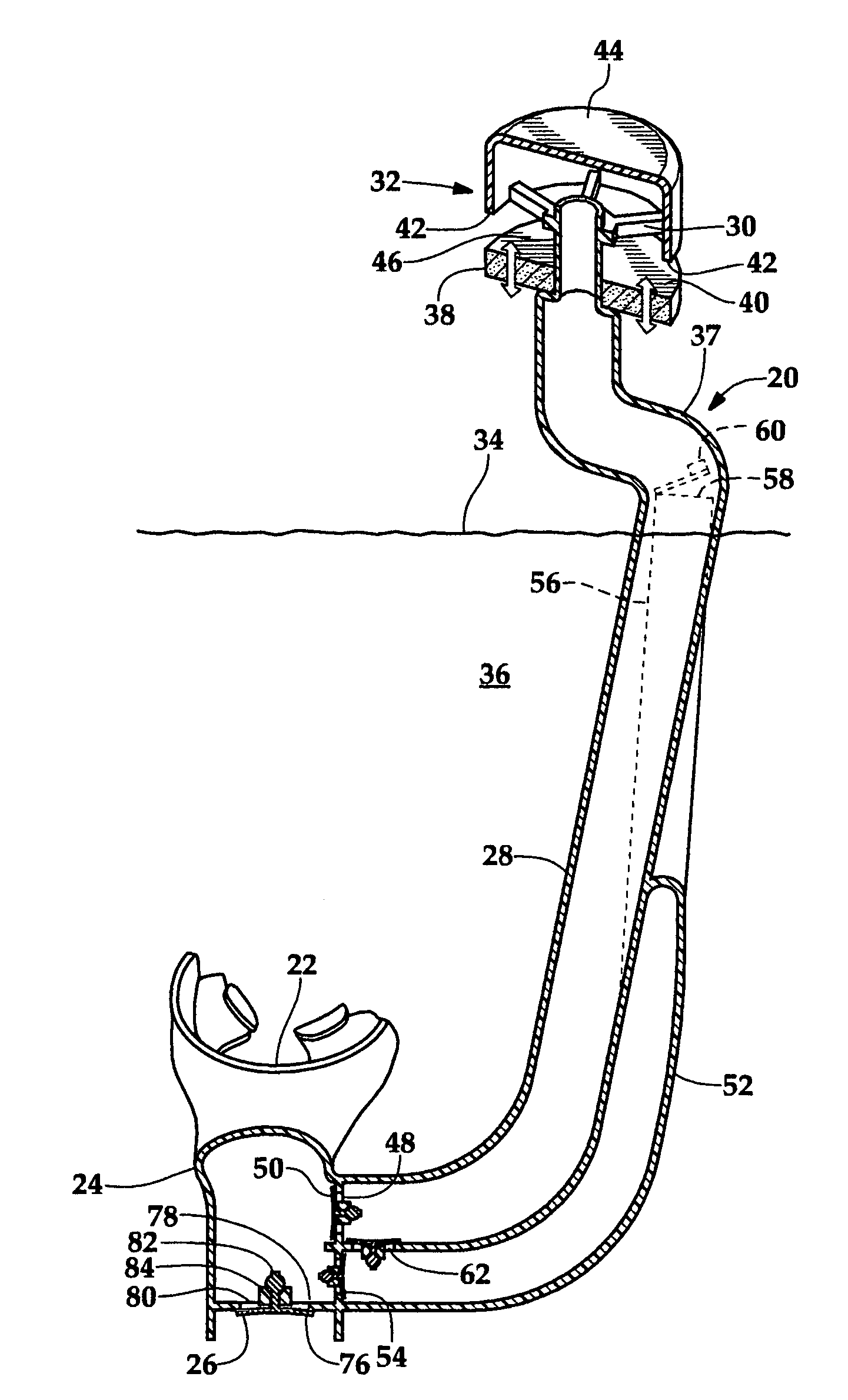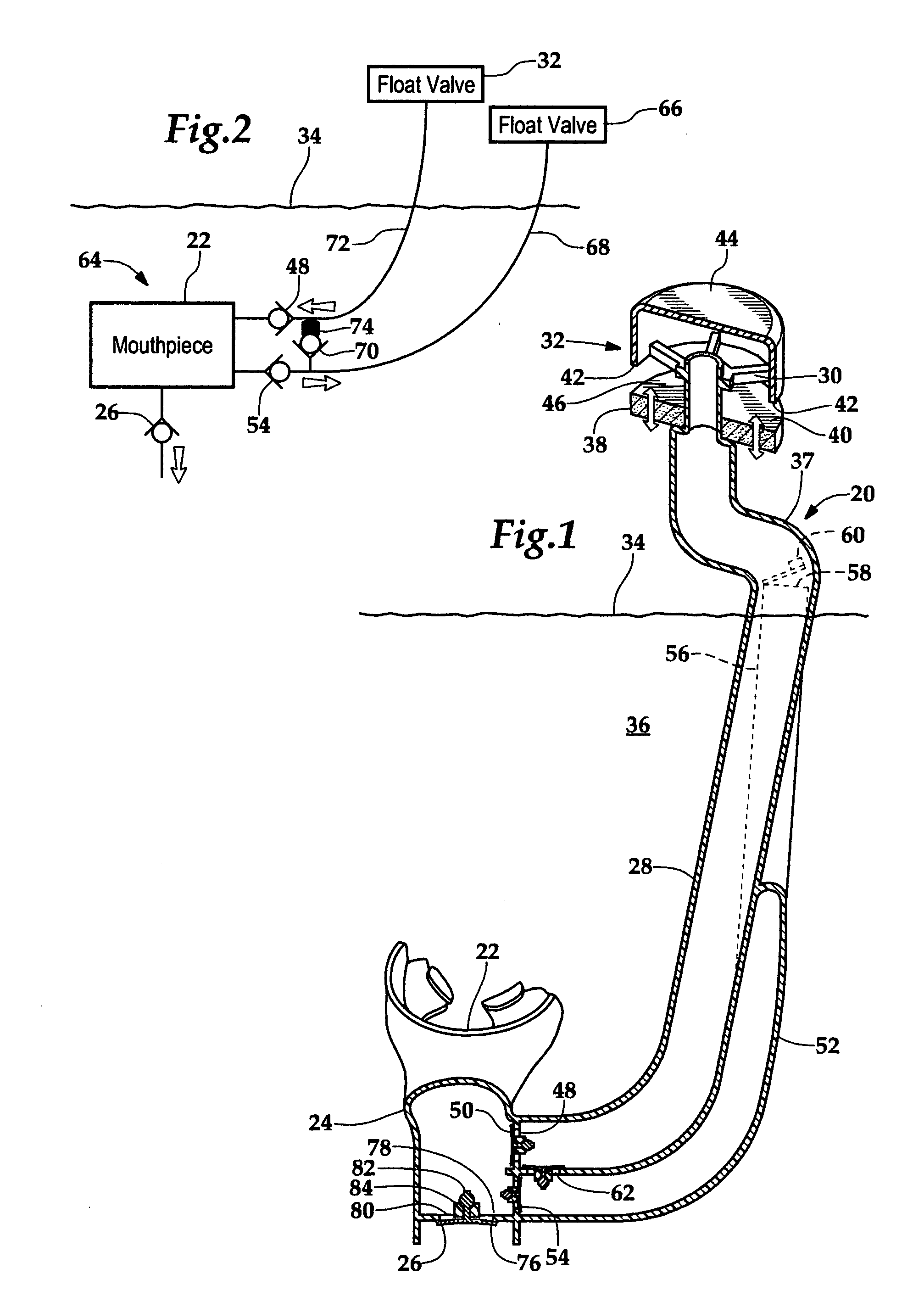Low physiological deadspace snorkel
a snorkel and dead space technology, applied in the field of snorkels, can solve the problems of increasing oxygen consumption, reducing the safe permissible dive time, and losing consciousness, and achieve the effect of removing the dead airspa
- Summary
- Abstract
- Description
- Claims
- Application Information
AI Technical Summary
Benefits of technology
Problems solved by technology
Method used
Image
Examples
Embodiment Construction
[0017] Referring more particularly to FIGS. 1-2, wherein like numbers refer to similar parts, a snorkel 20 is shown in FIG. 1. The snorkel 20 has a mouthpiece 22 which fits within a diver's mouth and through which the diver can inhale and exhale air. The mouthpiece 22 is an upward extension of a mouthpiece body 24 which extends downwardly to a purge valve 26. The purge valve 26 incorporates a check valve to allow water to be removed from the mouthpiece body 24 and to keep water from entering the mouthpiece body. An inhalation tube 28 extends from the mouthpiece body 24. The inhalation tube 28 extends laterally and upwardly to an air inlet orifice 30 which extends above the surface 34 of a body of water 36. The inhalation tube 28 may a bent section 37 to position the inlet orifice 30 over a snorkeler's head, The inlet orifice 30 is closed by a float valve 32 having a washer-shaped float 38, which has an upper surface 40 which seals against a downwardly facing lip 42 surrounding a cap...
PUM
 Login to View More
Login to View More Abstract
Description
Claims
Application Information
 Login to View More
Login to View More - R&D
- Intellectual Property
- Life Sciences
- Materials
- Tech Scout
- Unparalleled Data Quality
- Higher Quality Content
- 60% Fewer Hallucinations
Browse by: Latest US Patents, China's latest patents, Technical Efficacy Thesaurus, Application Domain, Technology Topic, Popular Technical Reports.
© 2025 PatSnap. All rights reserved.Legal|Privacy policy|Modern Slavery Act Transparency Statement|Sitemap|About US| Contact US: help@patsnap.com


